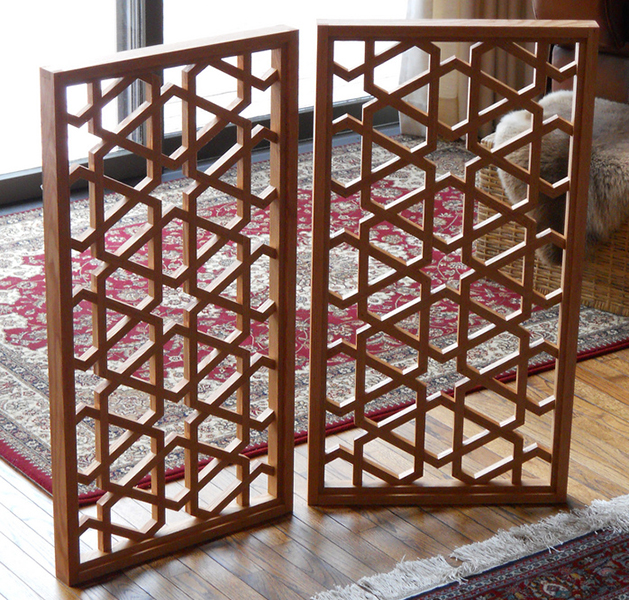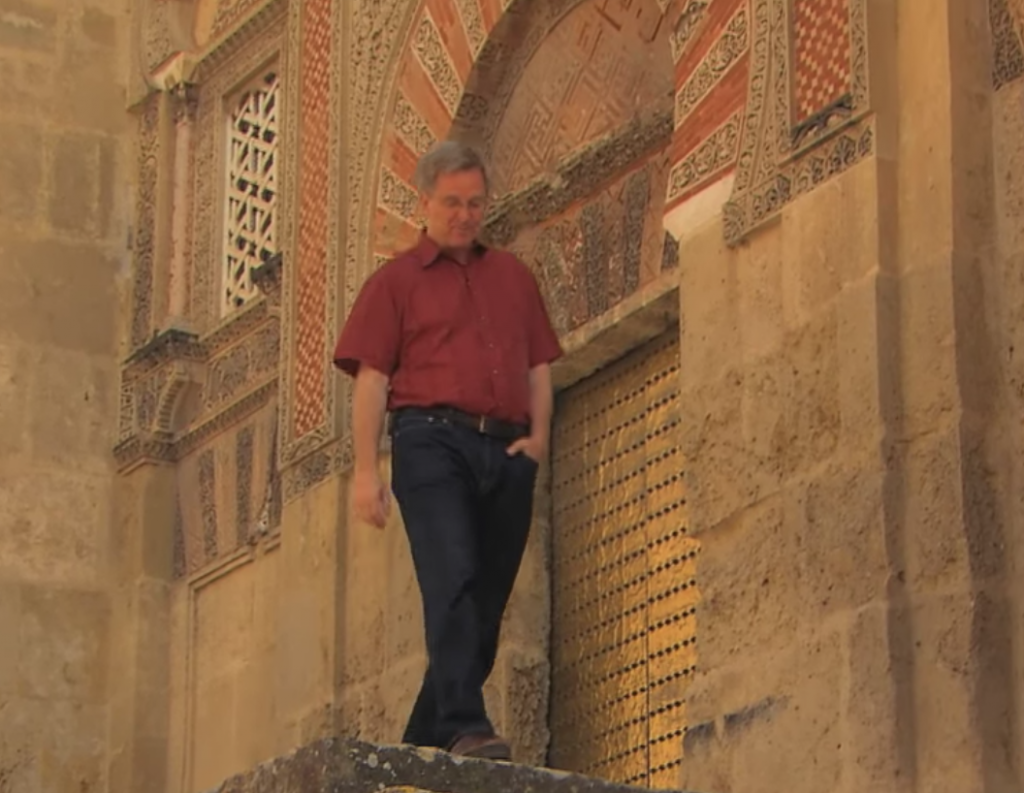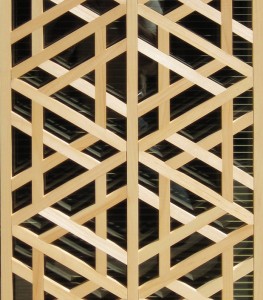Islamic Lattices
 Alan Adams is a retired research scientist following a long-time interest in Islamic geometric art. He is also a remarkable craftsman. Mr. Adams creates lattice panels by carefully cutting and joining many, many wooden parts. Most of the images here are his, used with permission. Here is how Mr. Adams describes one of the patterns we will be studying, called the Cordoba Moorish Lattice:
Alan Adams is a retired research scientist following a long-time interest in Islamic geometric art. He is also a remarkable craftsman. Mr. Adams creates lattice panels by carefully cutting and joining many, many wooden parts. Most of the images here are his, used with permission. Here is how Mr. Adams describes one of the patterns we will be studying, called the Cordoba Moorish Lattice:
The design reproduced in these lattice panels is one of the gems of Islamic art, almost one thousand years old. This design is found through most of the ancient world, from Andalusia to ancient Persia and Mughal India. It can be found as a frieze, incised ornament, small window lattices of stone or spectacular wall sized lattices. The proportions of this lattice are taken from a window lattice in the great mosque at Cordoba, begun in the eight century (CE) and remodeled into the eleventh. The original window lattice is carved in marble; almost all existing examples of geometric window lattices are carved from stone or stucco.
You can see the window that inspired these screens in a Rick Steves travel video.

Another pattern, called the Timurid Lattice, is identical in design to one at the tomb of an Asian conqueror, Timur, in what is now Uzbekistan. The tomb was the model for the great Taj Mahal in Agra, built by Timur’s descendants, the ruling dynasty of North India.
We will be using the construction and transformation tools in GeoGebra to demonstrate relationships between pairs of angles in the Timurid Lattice.
Angle pairs:
vertical angles, linear pair
alternate interior angles
alternate exterior angles
consecutive interior angles
corresponding angles
Make a plan first! Click here for the Timurid Lattice applet.


